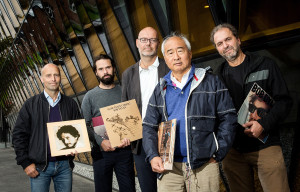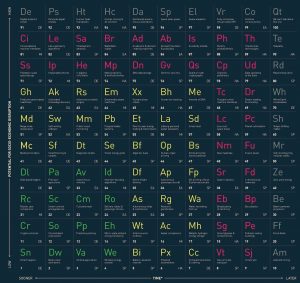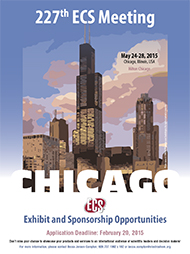
The band of researches at Karolinska Institutet have been partaking in a 17-year contest to see who can quote Bob Dylan the most in scientific articles before going into retirement.
Credit: Karolinska Institutet
A group of Swedish-based academics have been in a heated competition for the past 17 years – a competition over who can sneak the most Bob Dylan lyrics into articles, that is.
A group of five scientist from the Karolinska Institutet have revealed their long-running race to quote Dylan as many times as possible before retirement. The victor is to be awarded a free lunch at a local restaurant.
The competition began in 1997 after John Lundberg and Eddie Weitzberg published “Nitric Oxide and Inflammation: The Answer Is Blowing In the Wind” in Nature.
“We both really like Bob Dylan so when we set about writing an article concerning the measurement of nitric oxide gas in both the respiratory tracts and intestine, with the purpose of detecting inflammation, the title came up and it fitted there perfect,” says Weitzberg.
A few years later, the two saw an articles titled, “Blood on the Tracks: A Simple Twist of Fate,” by Jonas Frisen and Konstantinos Meletis. With this double Dylan reference, Lundberg and Weitzberg could not resist the competition. Shortly after, the two introduced “The times they are a-changin’” into an article and the battle was on.
This from The Guardian:
Word spread quickly through Stockholm’s Karolinska Institute, where all four men work, and before long there was a fifth competitor: Kenneth Chien, a professor of cardiovascular research, who is also keen to win a free lunch. By the time he met the others, he already had one Dylan paper to his name – Tangled Up in Blue: Molecular Cardiology in the Postmolecular Era, published in 1998. With five competing rivals, the pace of Dylan references accelerated. Lundberg and Weitzberg’s The Biological Role of Nitrate and Nitrite: The Times They Are a-Changin’, in 2009; Eph Receptors Tangled Up in Two in 2010; Dietary Nitrate – A Slow Train Coming, in 2011.
Read the full article here.
Weitzberg explained in an interview with The Local that they didn’t quote Dylan with strict scientific papers, only articles wrote about research by others, book introductions, and editorials.
Take a listen to the playlist we’ve compiled of some of the Dylan tracks that inspired these scientists.








